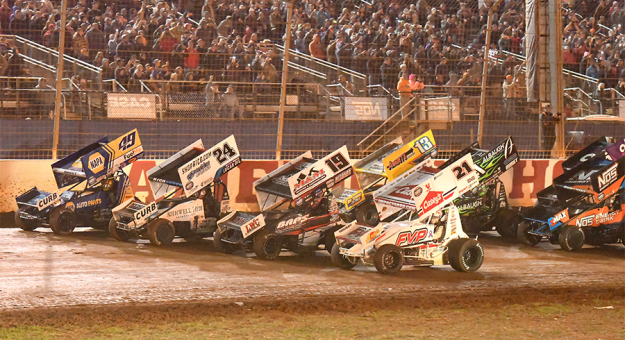While this season was “another great year” for World Racing Group, according to CEO Brian Carter, next year will be a “whole new world” for the dirt racing organization.
During his Tuesday afternoon appearance during Race Industry Week, Carter discussed highlights from the past season, the competitive environment the World of Outlaws faces and overall developments for World Racing Group.
Listed below are a few takeaways from the webinar.
Steady Growth For World Of Outlaws
There are several high points that stand out to Carter from WRG’s latest season.
There was a new World of Outlaws Late Model Series champion — Bobby Pierce. There was a record crowd at several sprint car events, including the Kings Royal at Ohio’s Eldora Speedway. And there was steady growth across the board, especially in the Xtreme Outlaw Midget Series, which leaped from 10 to 30-plus races this year.
For Carter, each achievement relates to the “sustainable business model” he’s been working toward since joining the company in 2004 — both on the driver/competition side and at-the-track attendance.
“We set a lot of records and it’s nice to feel the result of a steady growth as opposed to a big splash that’s not sustainable,” Carter noted. “The awareness right now is as high as it’s ever been for dirt-track racing.”
Xtreme Outlaw Midget Series ‘Fills A Hole’
Prior to the creation of the Xtreme Outlaw Midget Series in 2022, World Racing Group identified a gap in the system when it came to the development of young talent in the dirt-track world.
To fill that hole, WRG added the Xtreme Outlaw tour to its lengthy lineup — which spans from the Super DIRTcar Series to WoO sprint cars — to better create awareness about youth in the sport.
“What is the evolution of the young racer?” Carter said, referring to the steps a racer typically takes between micro sprints and a 410 sprint car. “We thought the market was a little underserved.”
Since its creation, the series has cultivated compelling storylines about up-and-coming drivers such as Cannon McIntosh, Chase McDermand, Gavin Miller and this year’s champion, Jade Avedisian.
“Midgets put on a great show, and we had a great champion,” Carter said. “It was a hole we saw in the evolution of bringing youth through racing. And it’s working right now.”
A Competitive Environment Is Nothing New
The World of Outlaws has a 45-year history to rely on when it comes to its standing in the dirt-track racing scene, having run its first race in 1978.
On top of that, when it comes to competitive threats such as High Limit Racing and other series, Carter says the Outlaws can also rely on “the relationship between us and our race tracks and the relationship between us and our teams.”
Though he acknowledged that rivalry can make the decision-making process “a bit harder” on some fronts, overall, the competition is nothing new.
“It’s not just against racing. It’s against year-round gymnastics, year-round baseball, year-round soccer — all those things that are getting these kids time and their parent’s time. So we’ve been operating in a competitive environment for a long time,” Carter said.
Nonetheless, next year in particular has become a balancing act for the WRG CEO.
“There are only a finite number of weekends in the year and a finite number of race tracks we can run at,” Carter explained. “My job is to make sure we can do this for 25 or 30 or 50 years, or into the indefinite future.”
He noted that the World of Outlaws Sprint Car Series schedule for next year is “being printed” and should be made available to the public soon. The World of Outlaws Late Model Series schedule was announced earlier this month.
Carter is among the many racing leaders appearing during Race Industry Week, which began on Monday and will run through Dec. 1. There is no charge to attend — click to register. Or, click here for the full schedule.
